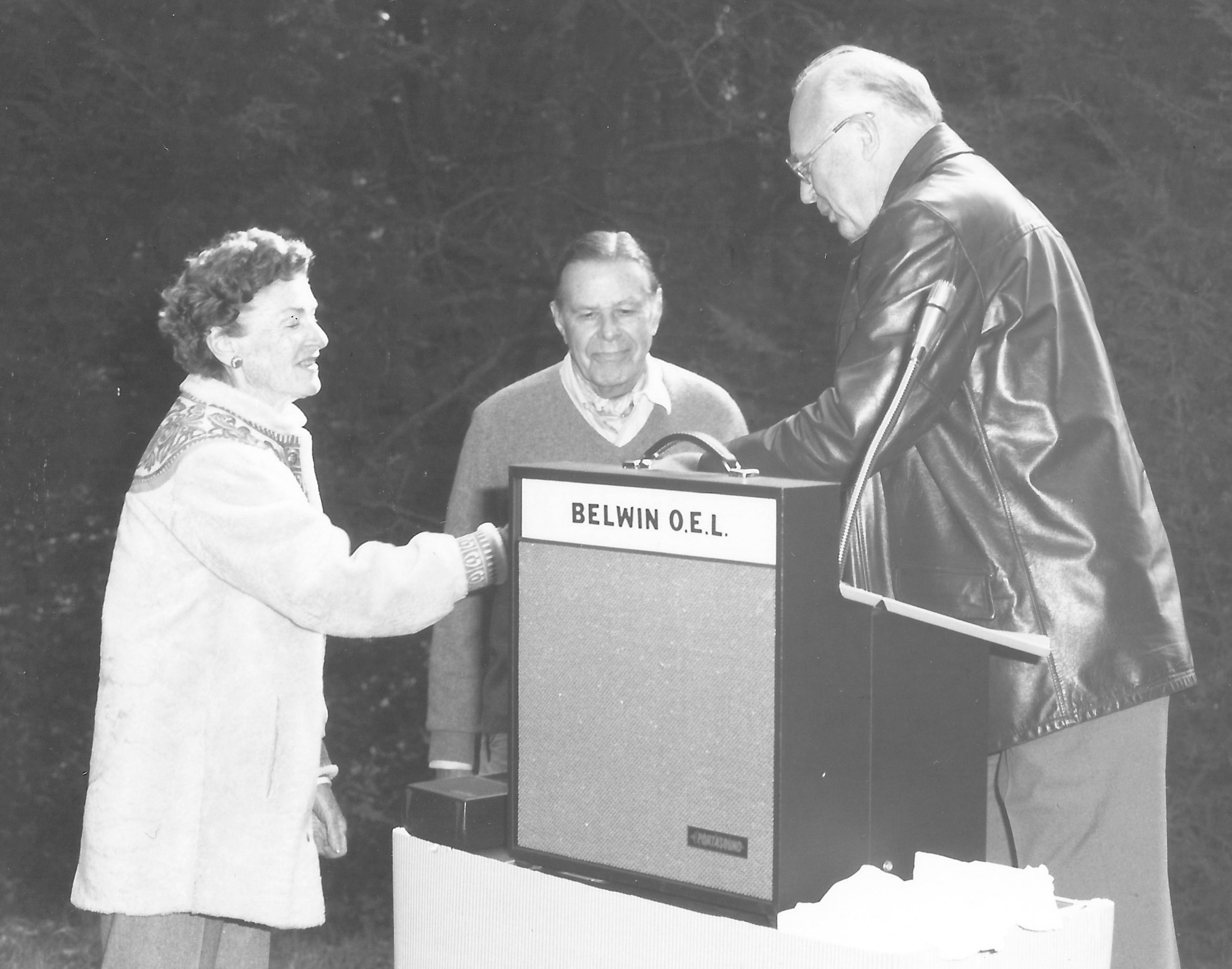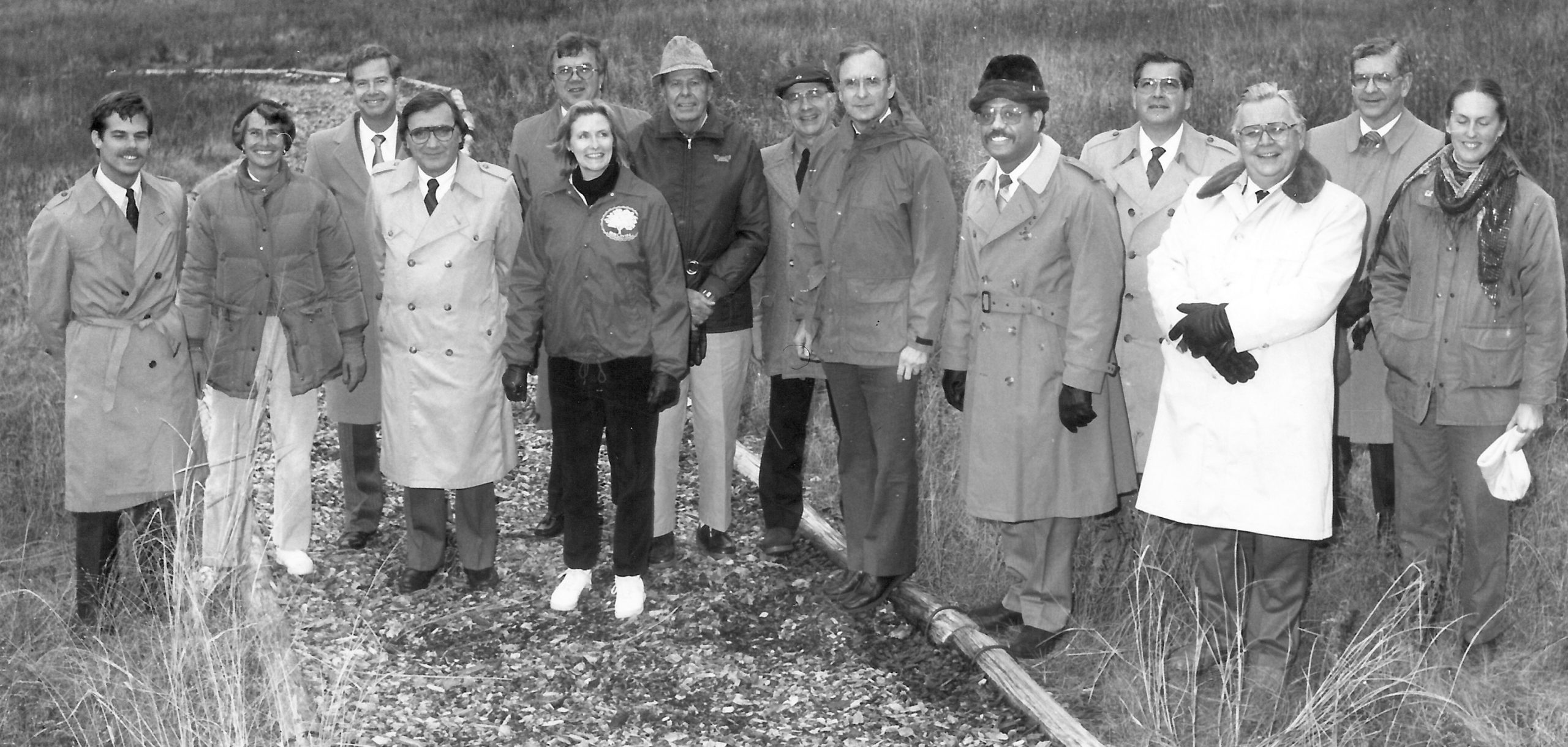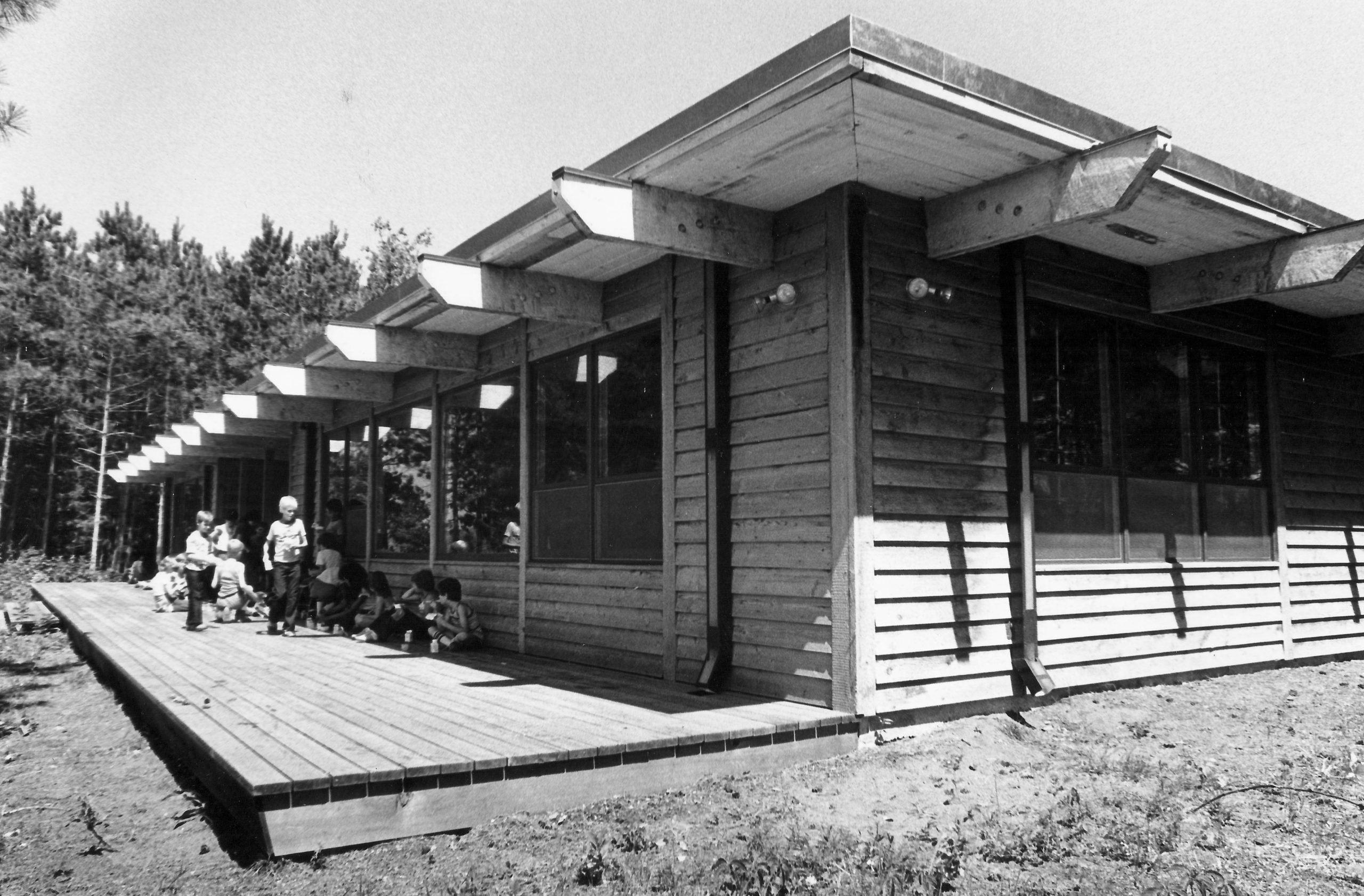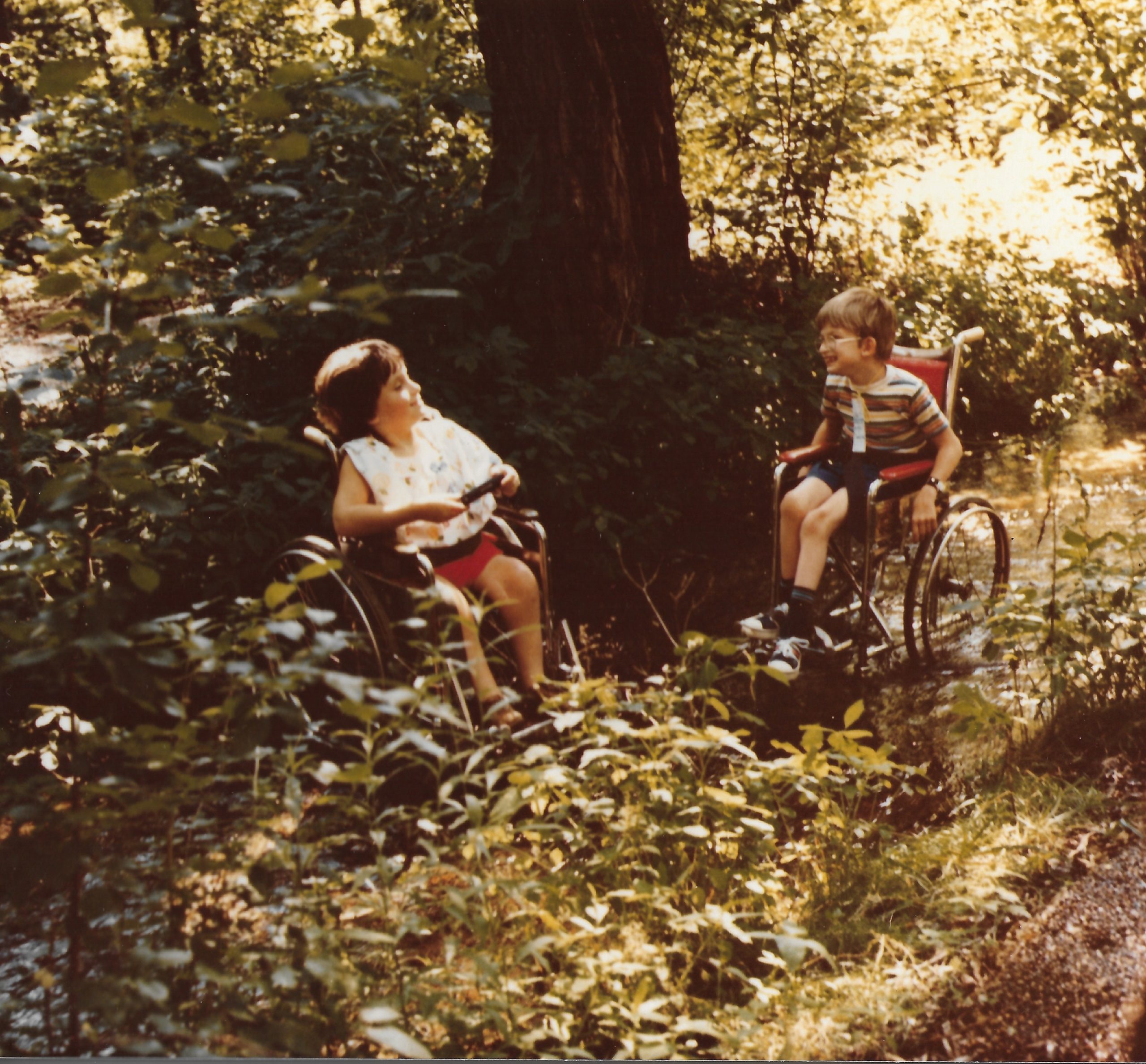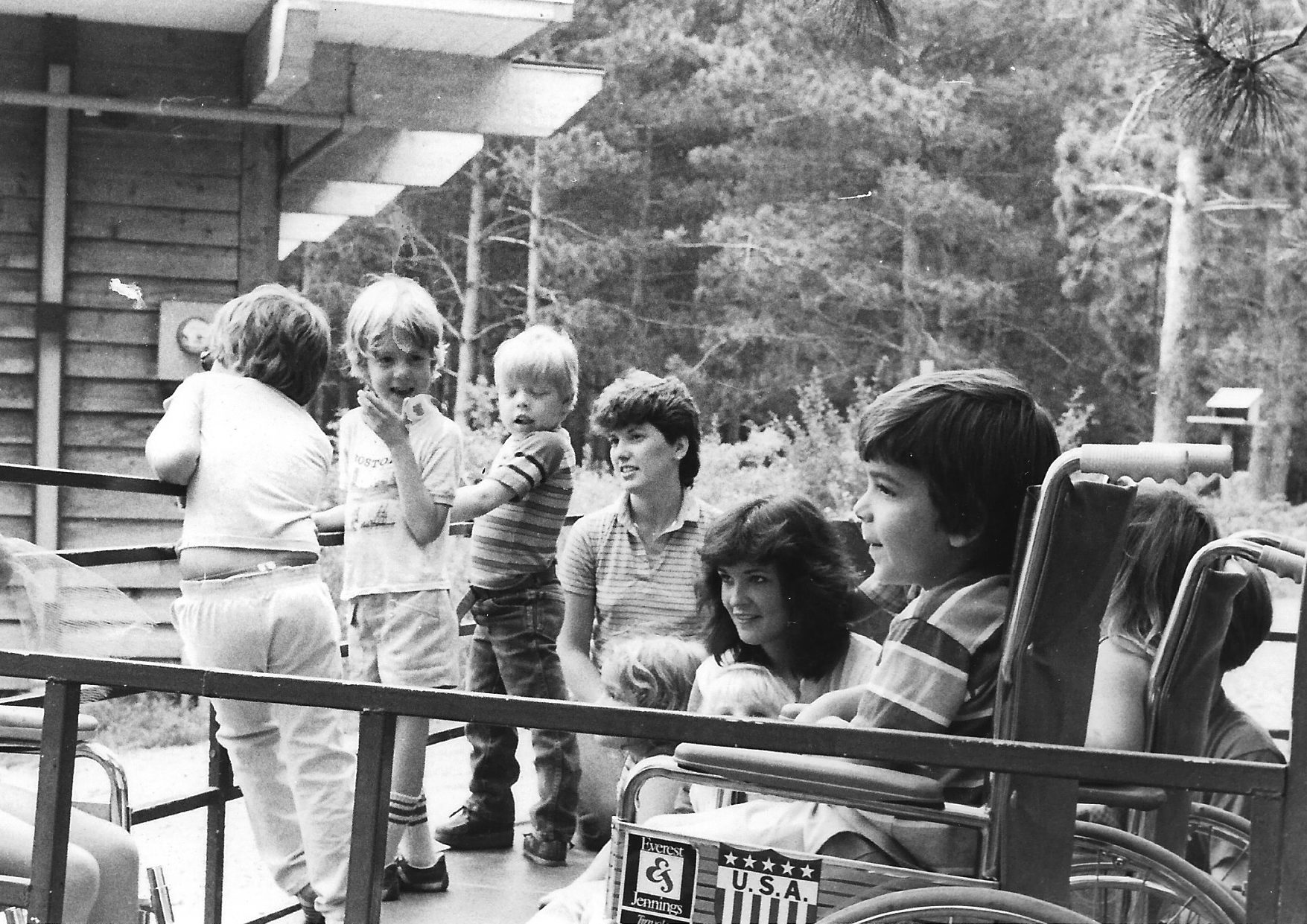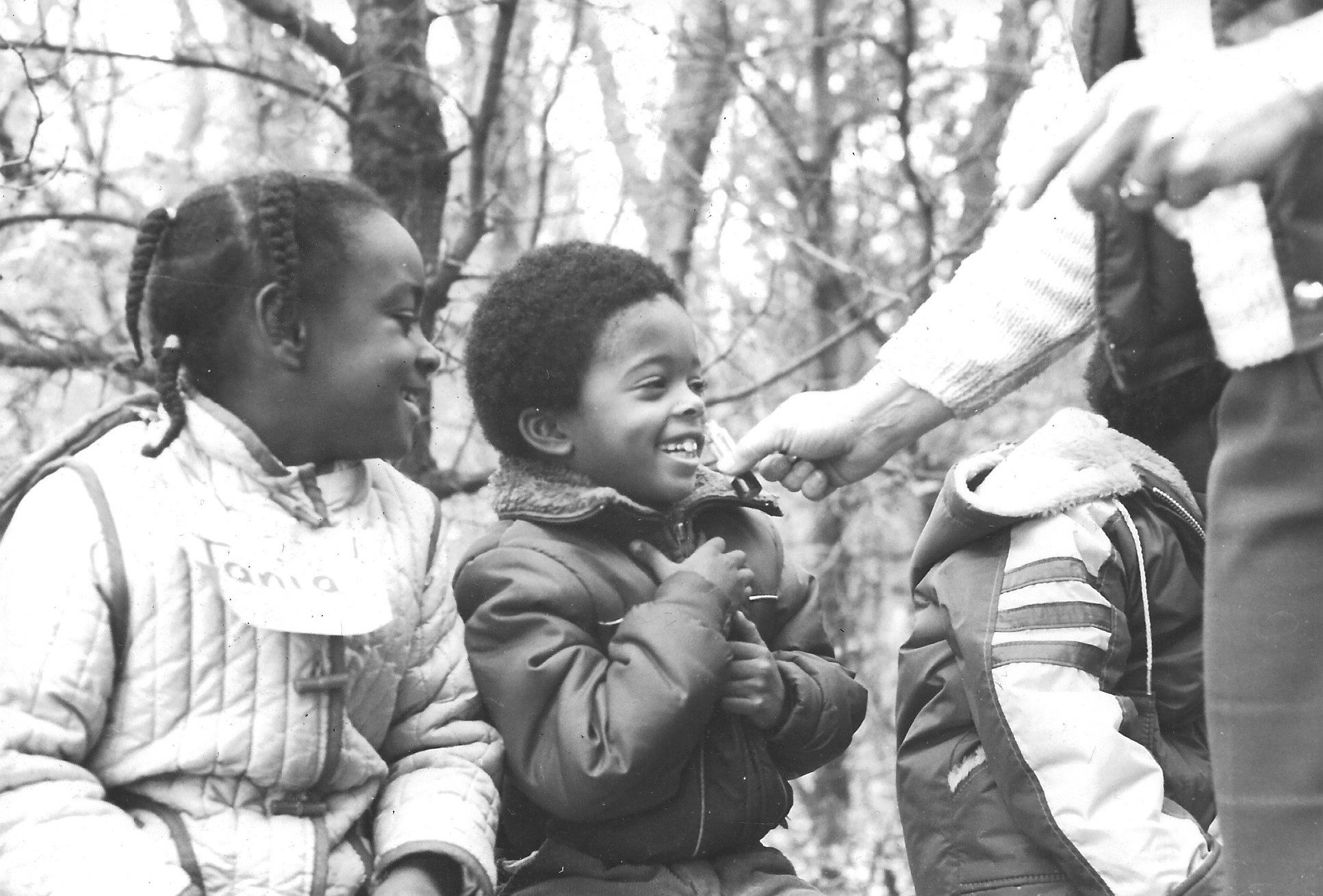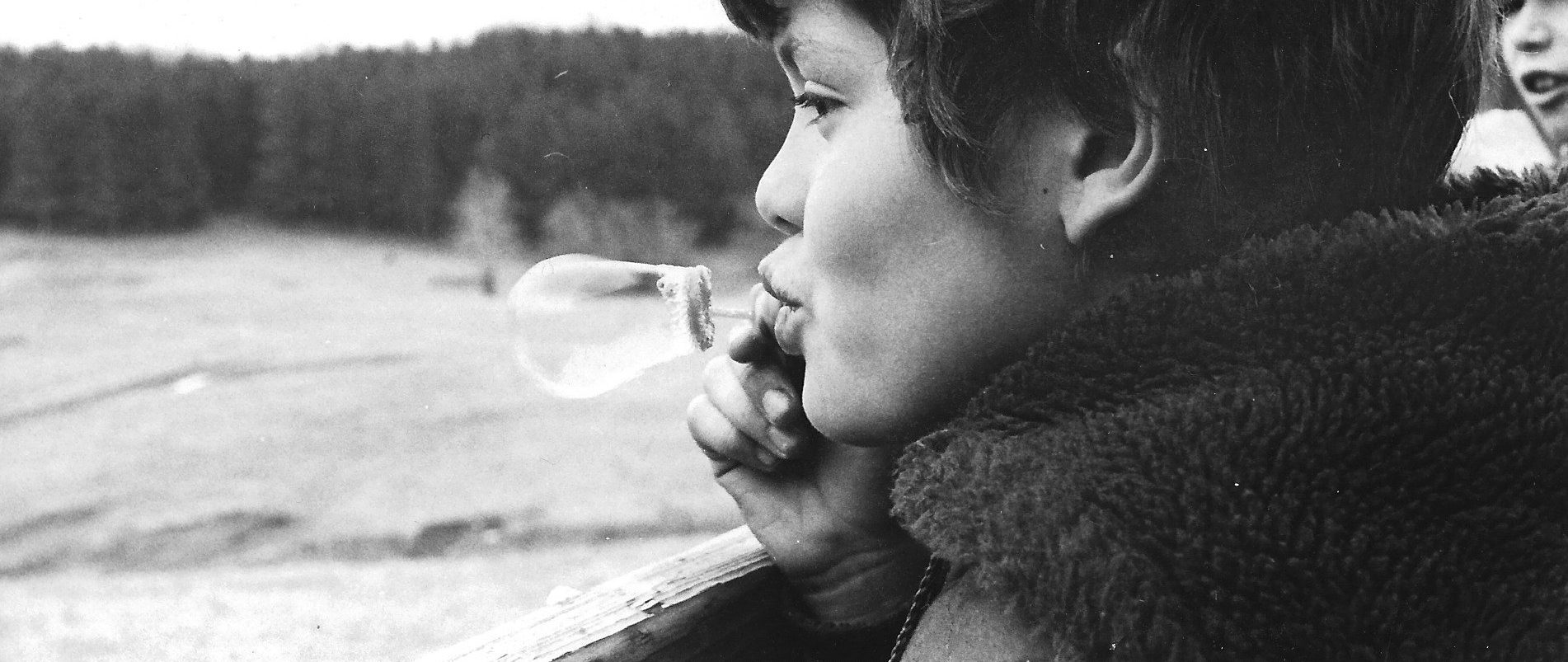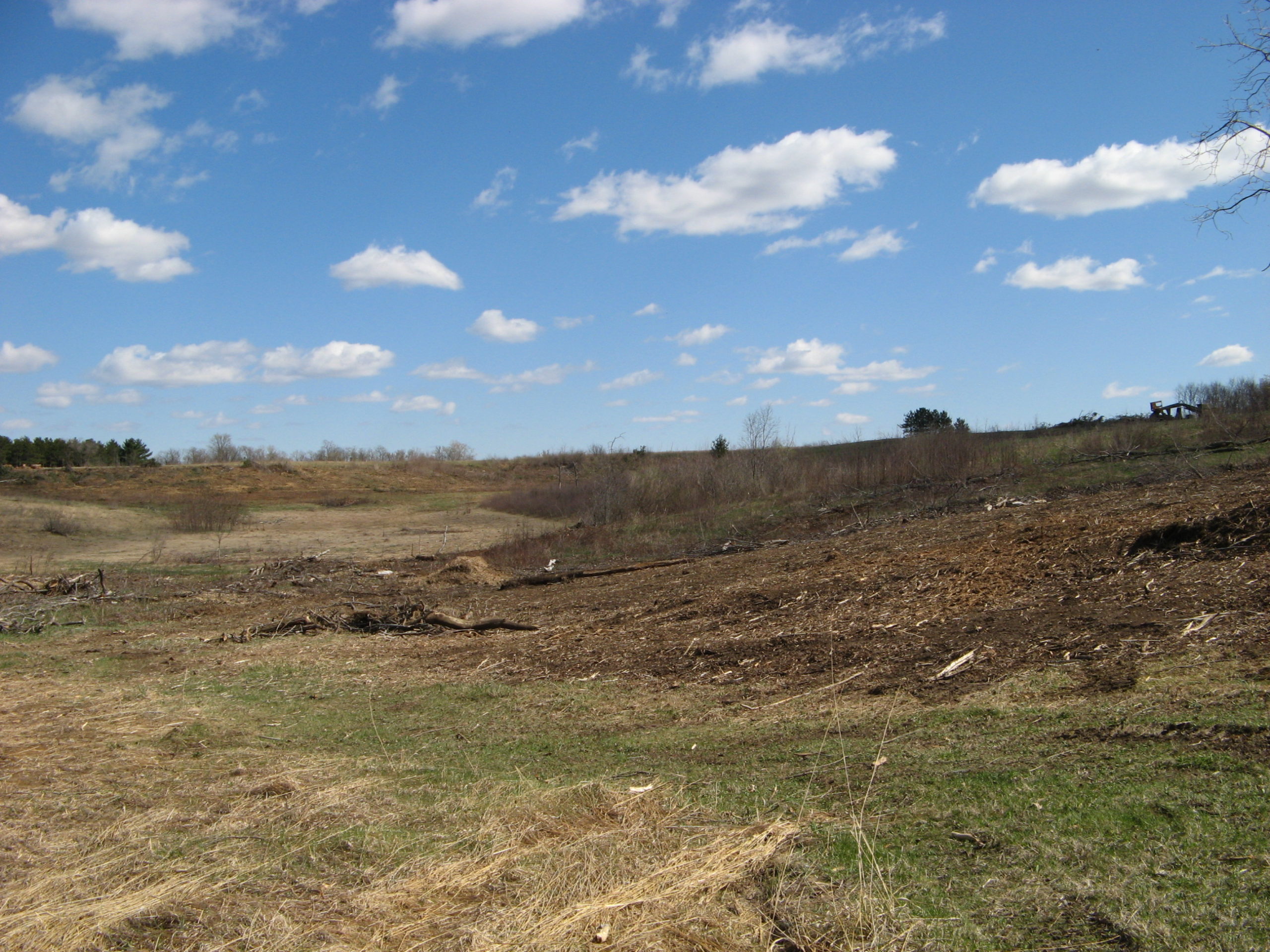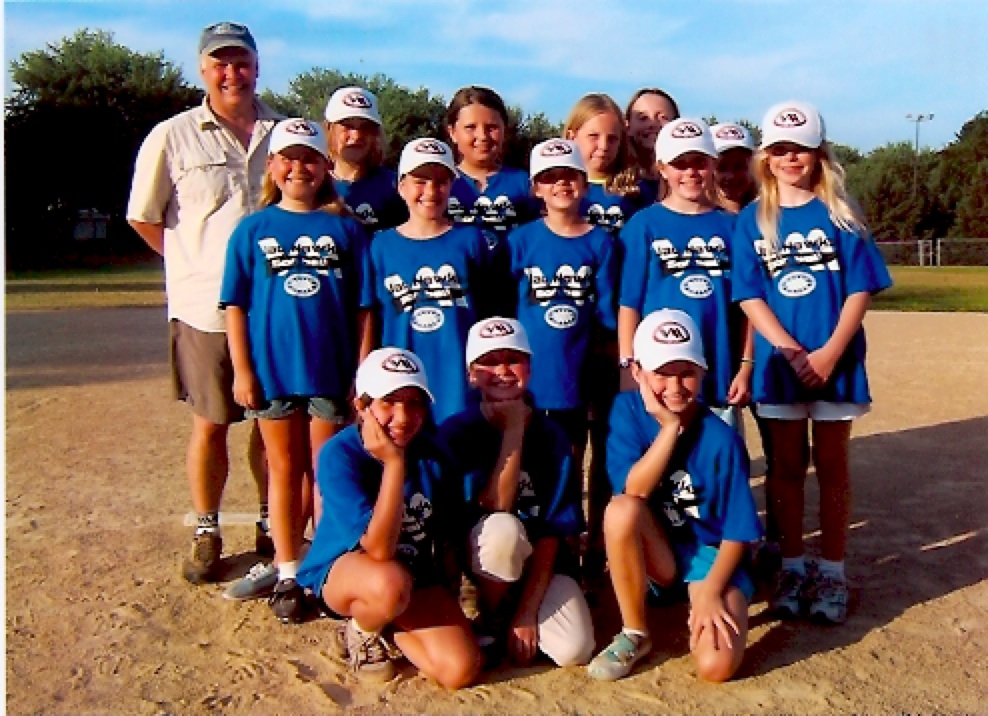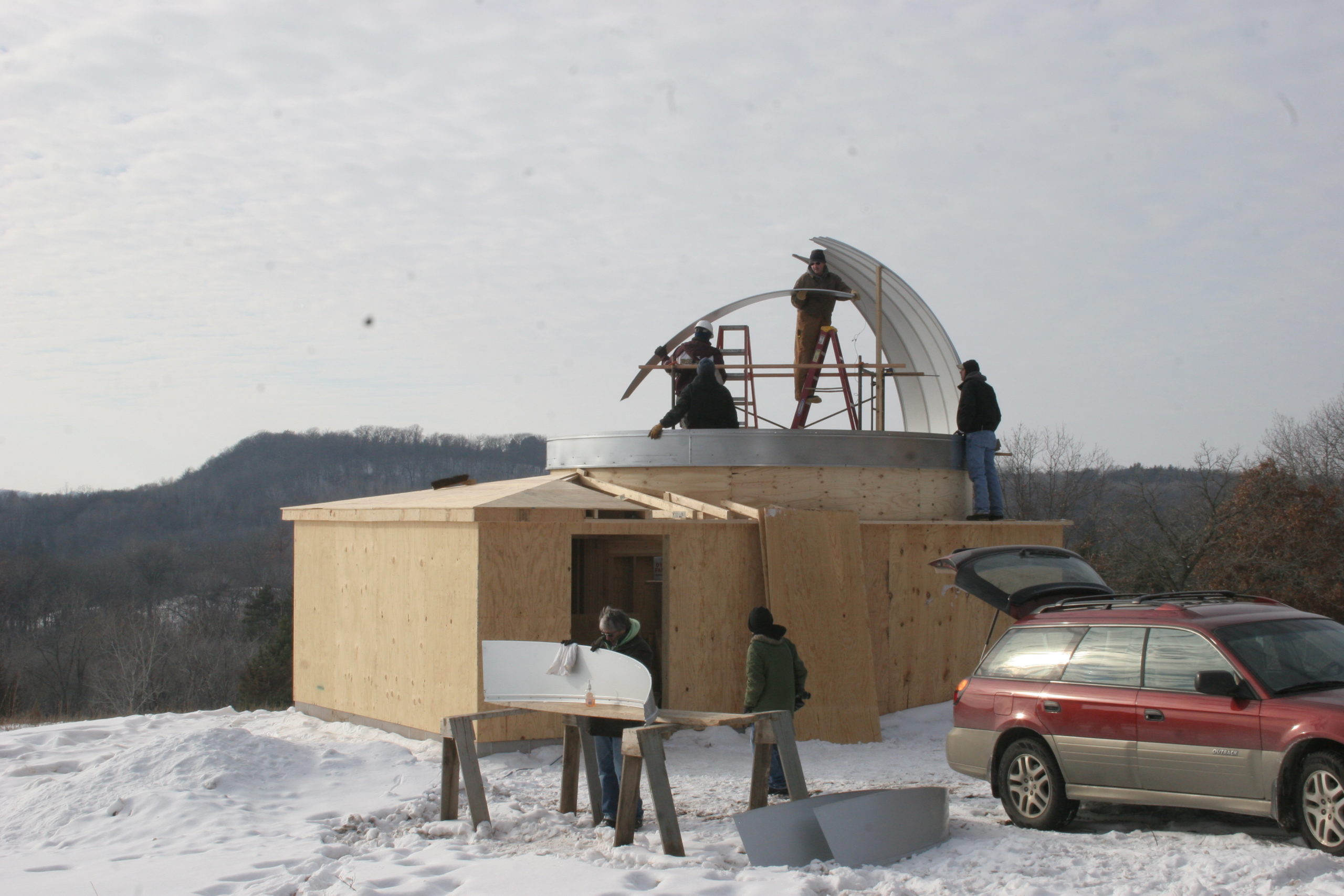In the late 1960’s, Charles Bell and Lucy Winton Bell found themselves in a unique position to do something to help address the challenges of diminishing wild spaces, water pollution, and the lack of outdoor education for children. They had recently acquired 200 acres of ecologically diverse land in Afton, Minnesota and wanted to use it to counter these devastating trends.
In 1970, Lucy and Charlie signed an agreement with Saint Paul Public Schools that would dedicate their land to outdoor science education for children. They established the Belwin Foundation (a combination of their names, Bell and Winton) and donated 225 acres of their land to it. With the arrival of students in 1971, Belwin Outdoor Education Laboratory, now Belwin Outdoor Science, was born.
Over the years, this vision has brought over half a million children to Belwin Conservancy for outdoor science education and protected hundreds of acres in the St. Croix Valley from development.
Environmental Education
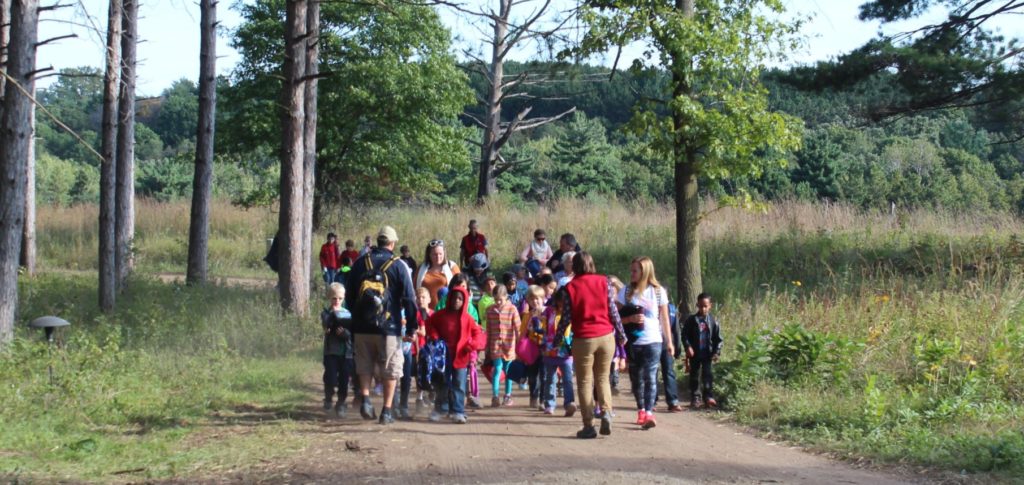
In the late 1960s and early 1970s, conservationists’ concerns were strikingly similar to those we face today: over-development of land and children spending less time outside.
It was at this time that Saint Paul Public Schools (SPPS) was looking for a site that could host outdoor science education for students in the district. They set veteran science educator Rodd Frye to the task.
When Frye toured the Bell family’s Afton property in the spring of 1970, he was taken with it, remarking it provided insights into “a love affair with nature.” From that meeting a new partnership was born: Belwin Outdoor Education Laboratory, today referred to as Belwin Outdoor Science (BOS). When the first students arrived in November of 1971, the program was an idea ahead of its time. It foreshadowed the importance of environmental and conservation education for young learners, and provided an opportunity for many urban students to realize their first experience of nature beyond the city.
To facilitate the partnership, Belwin built and continues to maintain the 5,000-square-foot Belwin Education Center and dedicated a 225-acre portion of its preserve to the program. SPPS designs and delivers the curriculum through its trained staff, and provides student transportation to and from the property.
Over the years, many generous staffers have left their mark on the program. Of particular note are SPPS staff Larry Kline, the building’s janitor, and Belwin Conservancy caretaker John Palmen, who in 1975 devised a vehicle to transport students with special needs into the woods, the creek, and out on the prairie.
The early success of these outings led to a discussion between the partners, who had a desire to serve all students, regardless of ability. Thus began Belwin’s adapted outdoor education programs, which give students with profound physical and emotional needs the opportunity to experience nature. This program, one of the first of its kind, continues today.
As the outdoor science program became more successful, it grew to include students from other area schools, including Afton-Lakeland Elementary and Bayport Elementary (now Andersen Elementary). Today, more than 10,000 SPPS students are served each year by the program in single-day, science-focused field investigations. This includes every third- and fifth-grade student in SPPS, approximately 1,000 middle and high school students, and approximately 1,800 special education students who attend Belwin’s adaptive outdoor education programs. Since 1971, more than 600,000 children have participated in the Belwin Outdoor Science program.
Land Protection
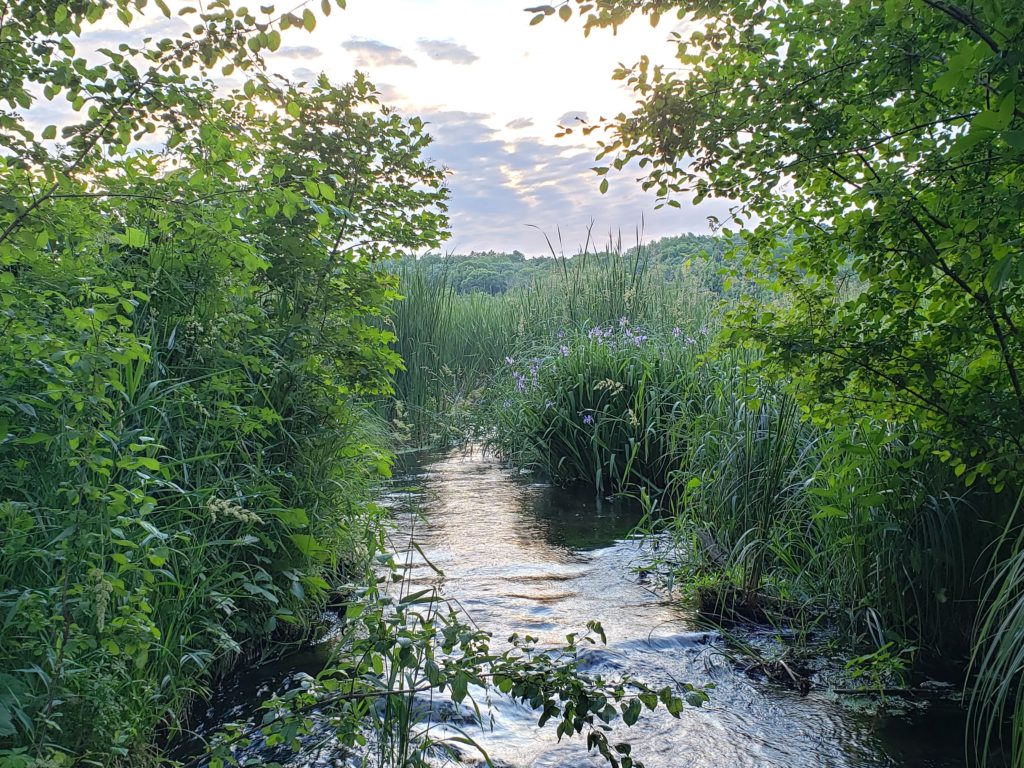
Belwin owns and manages more than 1,500 acres and holds conservation easements on more than 100 acres of land in Afton and West Lakeland Township, Minnesota. The property comprises one of the largest nature preserves in the region.
Belwin was founded with 225 acres of land donated by Charlie Bell and Lucy Winton Bell. That initial footprint grew when Belwin went through a large land acquisition period in the 1990s and early 2000s, expanding to own and steward over 1,400 acres by the late 2010s. Our challenge now is to maintain and improve wildlife habitat by protecting our borders and in-holdings from future development.
In 2020, Belwin acquired ownership and easements on an additional 97 acres of land that will be protected forever. These recent acquisitions were made possible through donations from individuals and funding from the Washington County Land and Water Legacy Program and Minnesota’s Environmental and Natural Resources Trust Fund.
Public Engagement
When Belwin restores land it also creates new spaces for the community. For the first 20 years of Belwin’s history the main focus was on the St. Croix River watershed and on outdoor education for regional school partners. With these programs established, Belwin began to branch out to meet the needs of our community in new ways.
1990 and 1995: Stagecoach Prairie was purchased as two parcels, restored over the subsequent years, and opened for hiking. Decades later, these grasslands are a living example of well-established, restored tallgrass prairie that everyone is welcome to enjoy.
2000: Belwin’s Lucy Winton Bell Athletic Fields (LWBAF) facility was created to fill a community need for a youth athletics outdoor sports facility. Built in partnership with local municipalities and private donors, LWBAF is run by the St. Croix Soccer Club and St. Croix Valley Athletic Association. These fields and the surrounding 2.5 miles of hiking trails host over 150,000 visits in an average year.
2008: Belwin partnered with Northstar Bison to reintroduce bison to the prairie. Bison, long absent from this area, play an essential role in the prairie ecosystem. Their presence on the 160-acre bison prairie has greatly enhanced the diversity and health of this restored biome. To allow the public to witness the dynamic between tallgrass prairie and these fascinating animals, Belwin built two observation platforms, one ADA accessible. They are open and free of charge while the bison are at Belwin from May to October each year.
2010: Construction of the Joseph. J. Casby Observatory began in the fall of 2009 and was completed in the summer of 2010, but the partnership between the Minnesota Astronomical Society (MAS) and Belwin Conservancy dates to the 1970s! That’s when Father George Metcalf’s property—now Belwin’s Creative Center—was used as a spiritual retreat center. He and his wife, Mary, wanted to downsize and contacted the Science Museum of Minnesota with the intention of donating the bulk of their property to the museum. While working with the Science Museum, Father Metcalf got to know members of the newly organized MAS. They were looking for a permanent location to conduct their observations and Father Metcalf, always interested in the natural world himself, offered them a portion of his property to use. This became Metcalf Field at Belwin Conservancy. In 2009, a professional-grade telescope was donated to MAS, which led to the construction of a permanent facility at Belwin’s Education Center. Public and private events take place year-round at the observatory and are conducted in partnership with MAS.
2015 to present: In the last decade, Belwin has worked with intention to open our restored land to more people in our community. This has included investments in our public trail systems and doubling our staff to support more public outreach. We are also creating more opportunities for people to interact with the land through our multi-disciplinary Arts, Culture, and Ecology programming and the expansion of community partnerships. To learn more about this work, visit our Impact: Land & People page.
